 |
|
The First Day on the Somme
1 July 1916
by
Martin Middlebrook
|
|
 |
|
This is
the 1971 Military Book Club Edition |
|
 |
 |
|
|
|
Publisher and place of
publication |
|
Dimensions in inches (to
the nearest quarter-inch) |
|
London: The Military Book Club by arrangement
with Allen Lane, The Penguin Press |
|
5¼ inches wide x 9 inches tall |
| |
|
|
|
Edition |
|
Length |
|
1977 [first published 1971] |
|
[xviii] + 365 pages |
| |
|
|
|
Condition of covers |
|
Internal condition |
|
Original pale grey cloth blocked in gilt on
the spine. The covers are
rubbed and the spine ends and corners are
bumped. |
|
There are no internal markings and the text is
very clean throughout. The edge of the text block is very lightly foxed. |
| |
|
|
|
Dust-jacket present? |
|
Other
comments |
|
Yes: however, the dust-jacket is scuffed,
rubbed and creased around the edges and slightly discoloured. |
|
Showing signs of light wear but, overall, a
Very Good example of this classic account. |
| |
|
|
|
Illustrations,
maps, etc |
|
Contents |
|
Please see below for details |
|
Please see below for details |
| |
|
|
|
Post & shipping
information |
|
Payment options |
|
The packed weight is approximately
900 grams.
Full shipping/postage information is
provided in a panel
at the end of this listing.
 |
|
Payment options
:-
UK buyers: cheque (in
GBP), debit card, credit card (Visa, MasterCard but
not Amex), PayPal
-
International buyers: credit card
(Visa, MasterCard but not Amex), PayPal
Full payment information is provided in a
panel at the end of this listing. |
|
|
 |
|
  |
|
 |
 |
|
The First Day on the Somme
Contents
List of Maps
List of Plates
Abbreviations
The Men
Introduction
1 The Men
2 The Western Front
3 The Somme and the Germans
4 The Plan
5 The Preparations
6 The Last Few Hours
7 Zero Hour
8 Review at 8.30 a.m.
9 The Morning
10 Review at Noon
11 The Afternoon
12 Review at Dusk
13 The Night
14 The Aftermath
15 The Cost
16 An Analysis
17 The Years that Followed
Appendix 1 Order of Battle of British Infantry Units
Appendix 2 Order of Battle of German Divisions Facing
the British Attack
Appendix 3 Senior Officer Casualties
Appendix 4 Victoria Cross Winners of 1 July 1916
Appendix 5 Battalions Suffering More than 500 Casualties
Appendix 6 A Tour of the Somme Battlefield
Acknowledgements
Bibliography
Index
List of Maps
1 The Western Front, June 1916
2 The British Zone, June 1916
3 The Somme, June 1916
4 The Somme Front, June 1916
5 The Infantry Attack Plan, 1 July 1916
6 The Breakthrough Plan
7 The Tyneside Irish Attack
8 The Diversionary Attack on the Gommecourt Salient
9 The Ulster Division Attack
10 The Capture of Montauban
11 The Somme today
List of Plates
Lieut-Col. Reginald Bastard, 2nd Lincolns
Pte Billy McFadzean, Belfast Young Citizens Volunteers
C.S.M. Percy Chappell, 1st Somerset Light Infantry, 1909
Bglr Bill Soar, 1 /7th Sherwood Foresters
Henry Webber
Poster calling for recruits
Pte Dick King and family, 10th King's Own Yorkshire
Light Infantry, 1915
Pte Albert McMillan, Public Schools Battalion Volunteers
at a recruiting office
The Clerks and Warehousemen of Manchester, including Pte
Paddy Kennedy
Sheffield City Battalion drilling at Bramall Lane
Cricket Ground
Lincolnshire Regiment recruits at rifle drill, 1914
Men of the Northamptonshire Regiment, including Charles
Matthews
The basilica, Albert, 1916
German battalion marching through a Somme village, 1916
German artillerymen, 1916
Men of German 91st Reserve Regiment in trenches at
Gommecourt
Gen. Sir Douglas Haig
Gen. Sir Henry Rawlinson
British artillery observation balloon near Fricourt
Maj.-Gen. de Lisle talks to 1st Lancashire Fusiliers, 29
June 1916
15-in. howitzer firing near Thiepval
A British howitzer shell explodes near
Beaumont Hamel
Effect of shelling on German village
fortress of Mametz
Soldiers of 2nd Royal Warwicks
Platoon of 7th Bedfords marching to the
trenches
1st London Scottish marching to the trenches
Men of the Public Schools Battalion
Assembly trench, dawn, 1 July 1916
Loading a Stokes mortar bomb
Hawthorn Redoubt mine explodes, 7.20
a.m., 1 July 1916
Crater left by mine explosion, Mash Valley
Men of 1st Lancashire Fusiliers
Advance of men of 29th Division
Tyneside Irish commence their advance
Dead British bomber in German trenches
near Mametz
German prisoners coming out of the British trenches
facing Mametz
German prisoners being marched to the rear
German dead in their front-line trench
British machine-gunners near La Boisselle
Wounded man rushed to the rear
Stretcher-bearers tending wounded men in a British
trench
The Deccan Horse
18-pounder field guns near Mametz
A carrying party resting in a
communication trench
Walking wounded of the 7th Division
Stretcher cases being evacuated from
trenches
British prisoners being marched to the rear
German machine-gunners with captured Lewis guns
German grave of British officer, Gommecourt
Roll call of 1st Lancashire Fusiliers
Cemetery in Blighty Valley, 1921 and now
Thiepval Memorial
Rebuilt basilica, Albert
|
|
 |
 |
|
The First Day on the Somme
Zero Hour
Exactly at 7.30 a.m. an uncanny
silence fell over the battlefield. The British barrage suddenly
ceased as it lifted from the German front line and gun-layers
adjusted their sights for the next target. By a strange coincidence,
the German guns, too, were silent. It was eerie; the sun was shining
out of a cloudless sky, birds hovered and swooped over the trenches,
singing clearly. To the men it seemed a weird anti-climax.
'Suddenly, for a few seconds, all seemed silent, the firing had
quietened down. I walked up and down the footboards saying to the
men, "It's a walk-over." I had almost a feeling of disappointment.
It was short lived.' (Lieut M. Asquith, 1st Barnsley Pals)
After a few seconds the quiet was shattered as the British barrage
fell upon the next line of enemy defences. In their own trenches
whistles blew, shouts came from the platoon and section commanders.
The Battle of the Somme had started.
The first away were those lying out in No Man's Land. The long lines
rose, men looked to left and right as if to correct their dressing
on a parade ground and set off after their officers at the steady,
well-rehearsed pace towards the enemy. There was no rushing, no
shouting.
For most, however, it was a case of over the top. First up the
ladders were the platoon commanders; behind them the heavily loaded
men struggled to get out quickly, urged on by those following.
Officers ran along the parapet shouting encouragement, leaning in
and giving a hand to pull the over-burdened soldiers up and out.
Before these men could form up in their waves they had first to pass
through their own barbed-wire defences. Some units took duck-boards
over with them and placed these on the wire to make bridges, but
most had to file through paths cut the previous night before they
could get into the open. Now that the action had begun most men lost
their fear; they knew what they had to do, their friends were all
around them, their officers leading. They pushed through the wire
and took their places in the waves.
The Germans, however, were alert;
their reaction was swift and deadly. An attacker at Gommecourt could
hear a bugle as a look-out called the Germans from their dug-outs to
man the trenches. The first machine-guns were soon in action and
found easy targets. British soldiers struggling out of their
trenches were hit and tumbled back, some dead before they fell. 'The
German machine-gun fire was terrible. Our colonel was hit after only
a few steps along the trench. I helped to prop him up against the
trench side. Then, we climbed on to the top of the trench. I had not
reached my full height when a machine-gun bullet smacked into my
steel helmet. I felt as if I had been hit with a sledge hammer. I
caught a glimpse of my helmet; it was completely smashed in.' (Pte
W. H. T. Carter, 1st Bradford Pals)
The Germans spotted some of the gaps in the British wire and their
machine-guns soon turned these narrow alleys into death-traps; men
trying to avoid their dead and wounded comrades got caught and were
themselves hit.
In spite of the unexpected opposition there was no hesitation as
more and more men left the trenches and, if they could, formed up
into their waves. They were bewildered; the Germans were all
supposed to be dead. 'We had no idea what it was going to be like
but a few yards from our trench, a Whizz Bang caught my platoon
sergeant in the throat and his head disappeared.' (Pte J. Devennie,
Derry Volunteers) There was no time for logical thought; discipline
and training took control of their bodily movements. 'The only
feeling I had was to get to the objective and stay there and the
thought that was uppermost in my mind was the phrase "For England",
which I seemed to be repeating continually. This is the truth and
not put in for heroics. To be perfectly truthful, I was scared
stiff.' (Pte W. L. P. Dunn, 1st Liverpool Pals)
At Gommecourt, the attack by the North Midland Division started
badly; everything seemed to be going wrong. This sector had had the
worst of the wet weather and some of the men had spent the night up
to their knees or waists in mud and water. The German shelling had
been very heavy during the night and there had been many casualties.
A smoke-screen, although it may have shielded the attackers from the
enemy, combined in some cases with a liberal rum issue to cause
confusion. On the extreme left Bugler Bill Soar went over with the
second wave of his battalion but it was impossible to get the men
lined up properly. Soar and those others who could be mustered were
formed up in makeshift fashion and set off into the smoke-screen
towards the German trenches.
In the 8th East Surreys, Capt. NevilFs four platoons, each with a
football, competed for their company commander's prize. Nevill
himself kicked off. 'As the gun-fire died away I saw an infantryman
climb onto the parapet into No Man's Land, beckoning others to
follow. As he did so he kicked off a football; a good kick, the ball
rose and travelled well towards the German line. That seemed to be
the signal to advance.' (Pte L. S. Price, 8th Royal Sussex).
Those who had been able to get out of their trenches and form up
into waves without being fired upon started their advance. As far as
the eye could see, lines of men moved forward, their rifles held
across their chests, bayonets glinting in the morning sun. 'As we
advanced out of our trenches the sun was shining gloriously and it
seemed as if every bird in the sky was trying to outsing the noise
of the guns.' (L/Cpl L. C. Palmer, Glasgow Commercials) At La
Boisselle another sound competed with the din of battle; the four
Tyneside Scottish battalions' pipers played their men into action.
When the Sheffield City Battalion men went over they looked for the
white tapes left out the previous night to guide them to the gaps in
the German wire, but the tapes were gone. The Germans had pulled
them in during the night.
All along the eighteen-mile front, the leading waves paced farther
across No Man's Land, into ground where no man had stood in daylight
for nearly two years. There were, as yet, few shell holes here and
animals were still living amid the wild flowers and rank summer
grass. At Gommecourt a subaltern in the London Division disturbed a
hare which ran off from under his feet and across the battlefield;
both were startled by the encounter.
It was in these open spaces in the middle of No Man's Land that the
German machine-gunners found their choicest targets. From their
trenches came the 'tac-tac-tac' of the guns as they traversed to and
fro along the endless lines of advancing men. Whole waves were swept
over by the fire. The dead lay in long rows where they had fallen,
the wounded lay with them, pretending to be dead, or took cover
wherever they could — in a fold in the ground, in one of the rare
shell holes. Many huddled behind the body of a dead comrade. If a
wave or part of it was missed by the first sweep, back would come
the traverse of fire seeking out the survivors.'The long line of men
came forward, rifles at the port as ordered. Now Gerry started. His
machine-guns let fly. Down they all went. I could see them dropping
one after another as the gun swept along them. The officer went down
at exactly the same time as the man behind him. Another minute or so
and another wave came forward. Gerry was ready this time and this
lot did not get so far as the others.' (Pte W. J. Senescall, The
Cambridge Battalion)
'For some reason nothing seemed to happen to us at first; we
strolled along as though walking in a park. Then, suddenly, we were
in the midst of a storm of machine-gun bullets and I saw men
beginning to twirl round and fall in all kinds of curious ways as
they were hit — quite unlike the way actors do it in films.' (Pte W.
Slater, 2nd Bradford Pals)
Just outside Mametz, the 9th Devons did not attack from their
front-line trench which had been badly damaged by shell fire, but
from the support line. As Capt. Martin led his company forward at
zero hour, they were for some time sheltered by the small hill at
Mansel Copse but, as the Devons topped the rise and moved downhill,
they were in full view of any enemy who might have survived the
bombardment.
A single machine-gun, built into the base of the crucifix on the
edge of the village, exactly where Capt. Martin had forecast, was
only 400 yards away - easy range for a competent machine-gunner. The
crew had survived; the gun was not damaged and, when it opened fire,
it caught the Devons on the exposed slope. Scores of men went down,
among them Capt. Martin, killed at the exact spot by Mansel Copse
that he had predicted from his model would be where his company
would be doomed.
In spite of the terrible fire, the infantry kept going. Although the
leading waves had been broken, individual survivors kept to their
steady, disciplined pace . . .
|
|
 |
 |
|
The First Day on the Somme
From the dust-jacket:
After an immense but useless
bombardment, at 7.30 a.m. on 1 July 1916 the British Army went over
the top and attacked the German trenches. It was the first day of
the Battle of the Somme, and on that day the British suffered nearly
60,000 casualties, two for every yard of their front. The casualties
exceeded not only the entire infantry strength of the present
British Army but the combined battle casualties of the Crimean, the
Boer and the Korean wars. With more than fifty times the daily
losses at El Alamein and fifteen times the British casualties on
D-Day, 1 July 1916 was the blackest day in the history of the
British Army. But, more than that, as Lloyd George recognised, it
was a watershed in the history of the First World War. The Army that
attacked on that day was the volunteer Army that had answered
Kitchener's call. It had gone into action confident of a decisive
victory. But by sunset on the first day on the Somme, no one could
any longer think of a war that might be won. After that it was a
struggle that had simply to be endured.
And something more than confidence had vanished. Innocence could
survive no longer. If the First World War is the beginning of modern
history then 1 July 1916 is the most crucial day in that change. As
one survivor wrote later: 'So ended the golden age.'
Martin Middlebrook's research has covered not just official and
regimental histories and tours of the battlefields, but interviews
with hundreds of survivors, both British and German. As to the
action itself, he conveys the overall strategic view and the
terrifying reality that it was for front-line soldiers.
|
|
 |
|
  |
 |
|

Please note: to avoid opening the book out, with the
risk of damaging the spine, some of the pages were slightly raised on the
inner edge when being scanned, which has resulted in some blurring to the
text and a
shadow on the inside edge of the final images. Colour reproduction is shown
as accurately as possible but please be aware that some colours
are difficult to scan and may result in a slight variation from
the colour shown below to the actual colour.
In line with eBay guidelines on picture sizes, some of the illustrations may
be shown enlarged for greater detail and clarity.
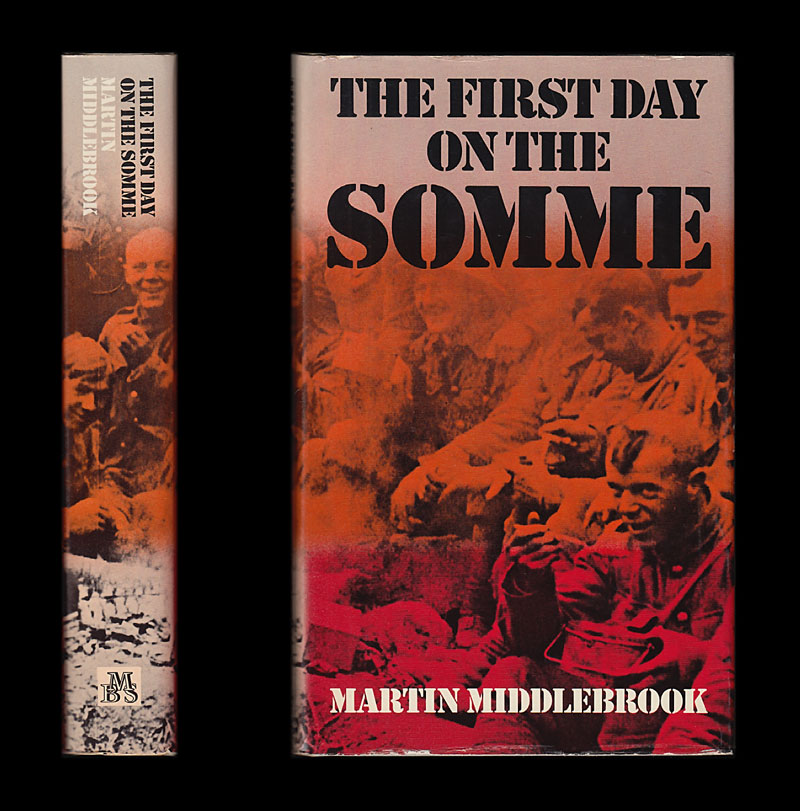
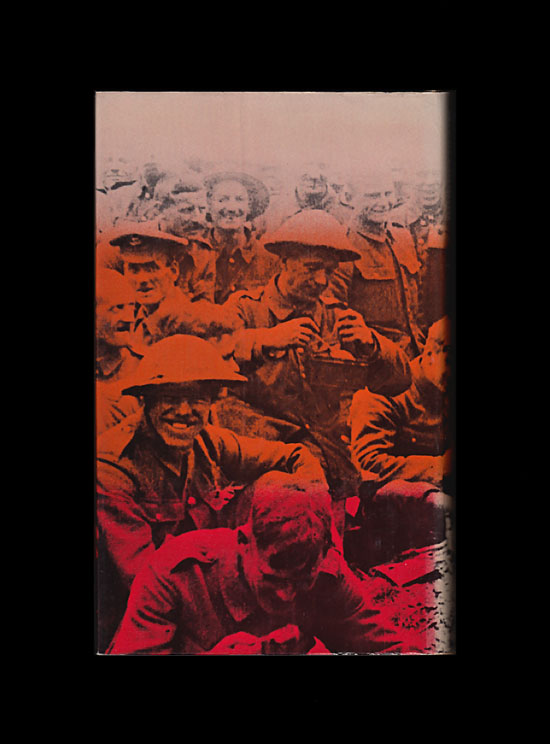

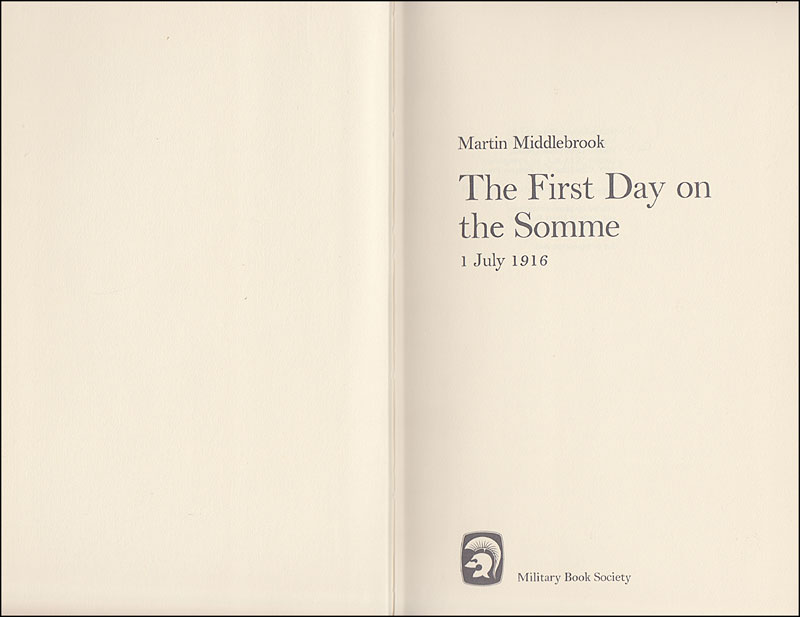
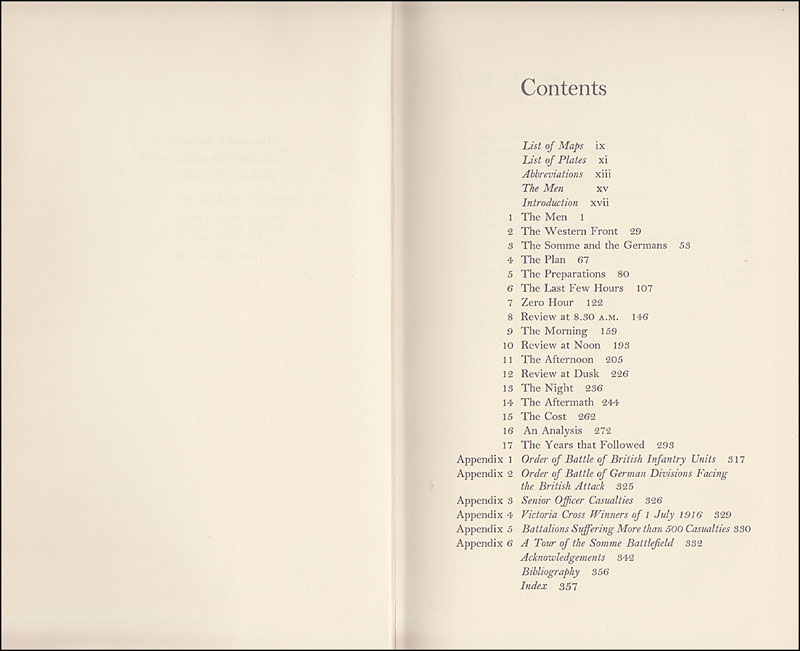

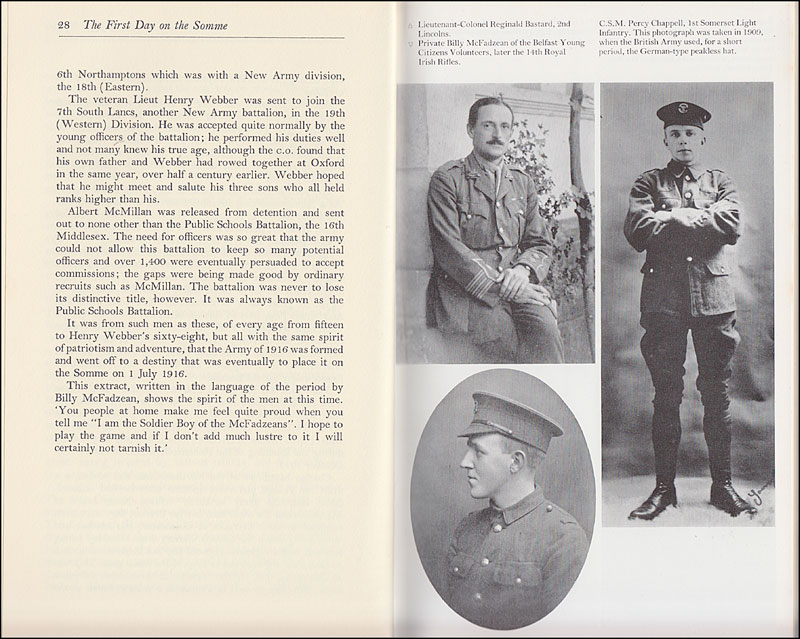
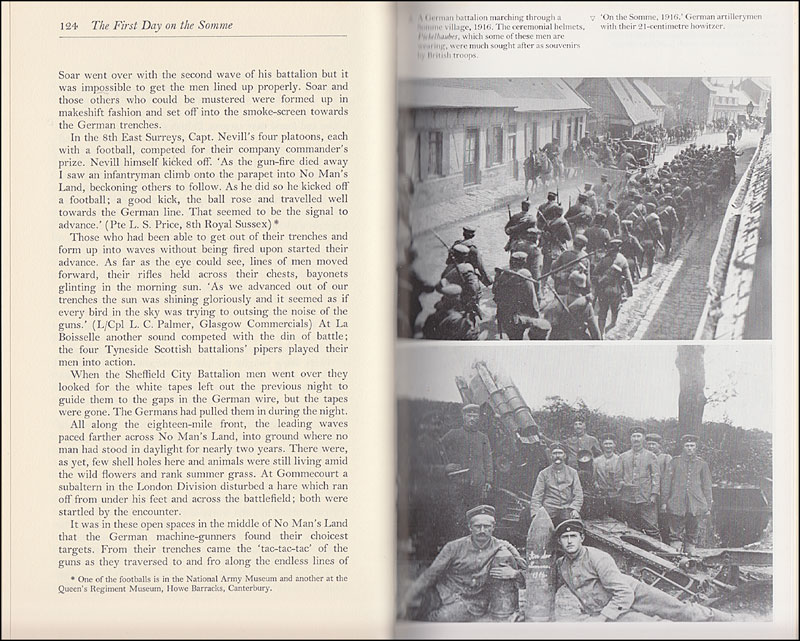
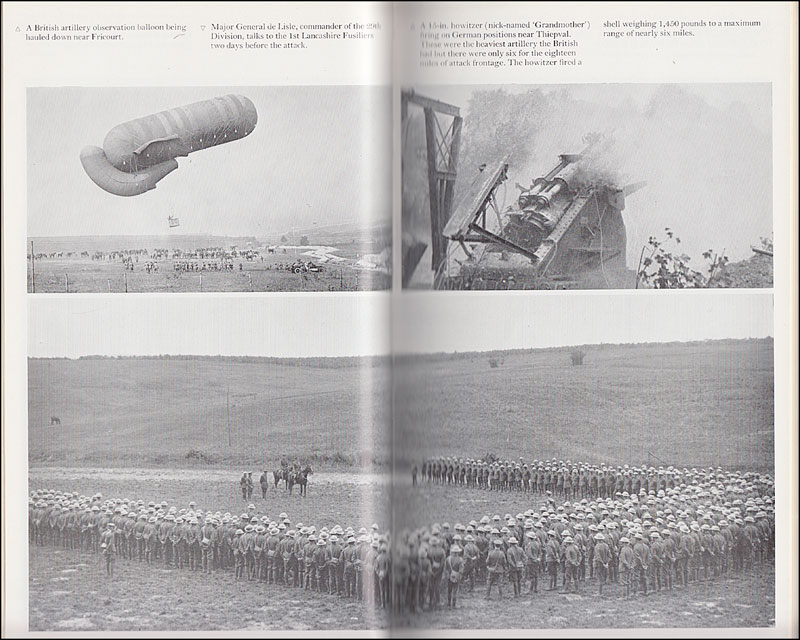
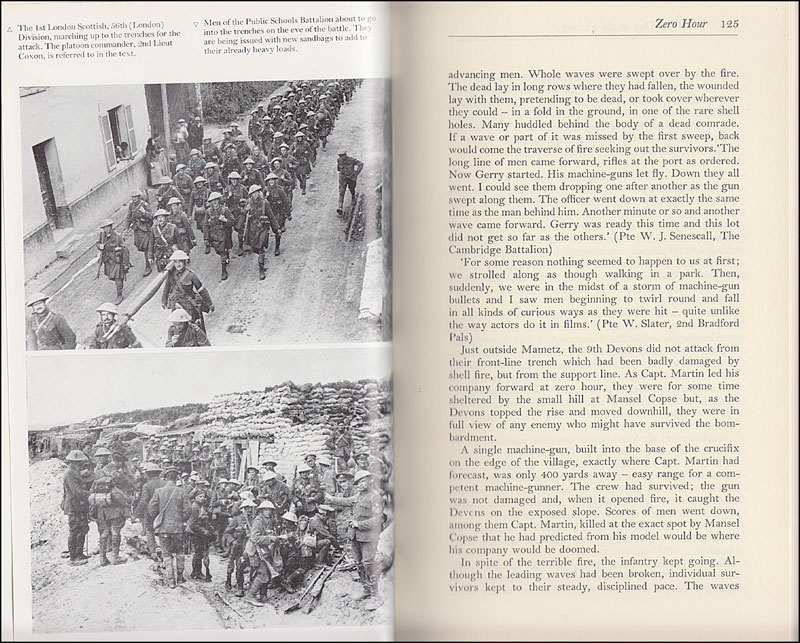
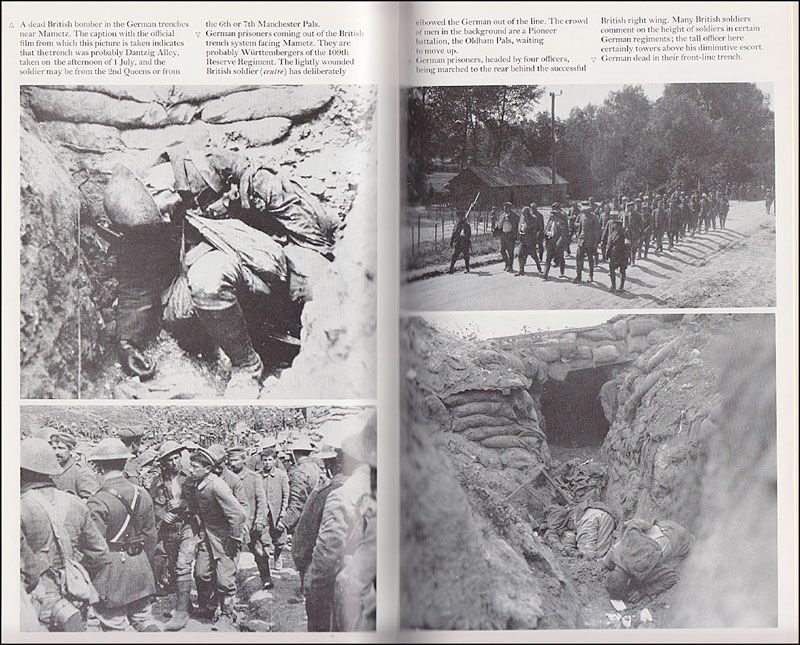
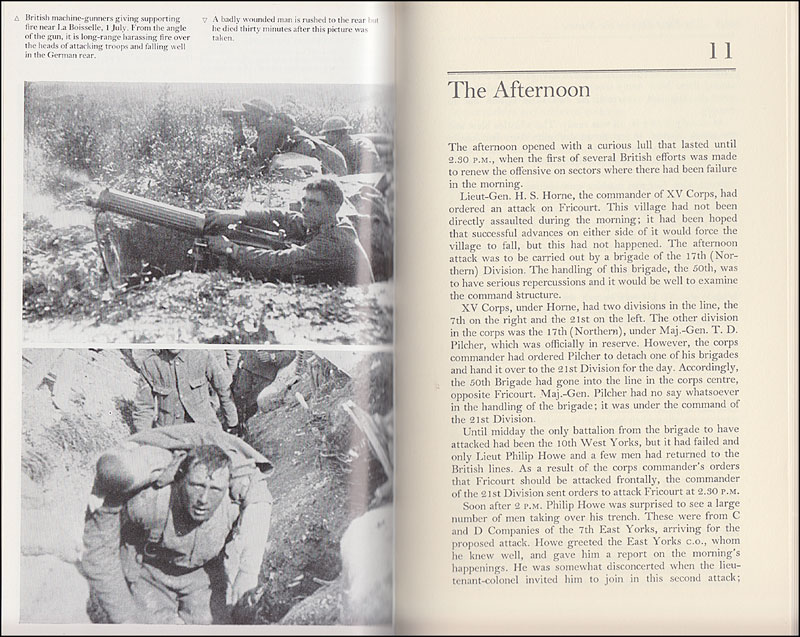 |
|
 |
|
 

IMPORTANT INFORMATION FOR PROSPECTIVE
BUYERS |
 |
|
U.K. buyers:
|
To estimate the
“packed
weight” each book is first weighed and then
an additional amount of 150 grams is added to allow for the packaging
material (all
books are securely wrapped and posted in a cardboard book-mailer).
The weight of the book and packaging is then rounded up to the
nearest hundred grams to arrive at the postage figure. I make no charge for packaging materials and
do not seek to profit
from postage and packaging. Postage can be combined for multiple purchases. |
Packed weight of this item : approximately 900 grams
|
Postage and payment options to U.K. addresses: |
-
Details of the various postage options (for
example, First Class, First Class Recorded, Second Class and/or
Parcel Post if the item is heavy) can be obtained by selecting
the “Postage and payments” option at the head of this
listing (above). -
Payment can be made by: debit card, credit
card (Visa or MasterCard, but not Amex), cheque (payable to
"G Miller", please), or PayPal. -
Please contact me with name,
address and payment details within seven days of the end of the auction;
otherwise I reserve the right to cancel the auction and re-list the item. -
Finally, this should be an enjoyable
experience for both the buyer and seller and I hope you will
find me very easy to deal with. If you have a question or query
about any aspect (postage, payment, delivery options and so on),
please do not hesitate to contact me, using the contact details
provided at the end of this listing.
|
|
 |
 |
|
International
buyers:
|
To estimate the
“packed
weight” each book is first weighed and then
an additional amount of 150 grams is added to allow for the packaging
material (all
books are securely wrapped and posted in a cardboard book-mailer).
The weight of the book and packaging is then rounded up to the
nearest hundred grams to arrive at the shipping figure.
I make no charge for packaging materials and do not
seek to profit
from shipping and handling.
Shipping can
usually be combined for multiple purchases
(to a
maximum
of 5 kilograms in any one parcel with the exception of Canada, where
the limit is 2 kilograms). |
Packed weight of this item : approximately 900 grams
| International Shipping options: |
Details of the postage options
to various countries (via Air Mail) can be obtained by selecting
the “Postage and payments” option at the head of this listing
(above) and then selecting your country of residence from the drop-down
list. For destinations not shown or other requirements, please contact me before buying.
Tracked and "Signed For" services are also available if required,
but at an additional charge to that shown on the Postage and payments
page, which is for ordinary uninsured Air Mail delivery.
Due to the
extreme length of time now taken for deliveries, surface mail is no longer
a viable option and I am unable to offer it even in the case of heavy items.
I am afraid that I cannot make any exceptions to this rule.
|
Payment options for international buyers: |
-
Payment can be made by: credit card (Visa
or MasterCard, but not Amex) or PayPal. I can also accept a cheque in GBP [British
Pounds Sterling] but only if drawn on a major British bank. -
Regretfully, due to extremely
high conversion charges, I CANNOT accept foreign currency : all payments
must be made in GBP [British Pounds Sterling]. This can be accomplished easily
using a credit card, which I am able to accept as I have a separate,
well-established business, or PayPal. -
Please contact me with your name and address and payment details within
seven days of the end of the auction; otherwise I reserve the right to
cancel the auction and re-list the item. -
Finally, this should be an enjoyable experience for
both the buyer and seller and I hope you will find me very easy to deal
with. If you have a question or query about any aspect (shipping,
payment, delivery options and so on), please do not hesitate to contact
me, using the contact details provided at the end of this listing.
Prospective international
buyers should ensure that they are able to provide credit card details or
pay by PayPal within 7 days from the end of the auction (or inform me that
they will be sending a cheque in GBP drawn on a major British bank). Thank you.
|
|
 |
 |
|

(please note that the
book shown is for illustrative purposes only and forms no part of this
auction)
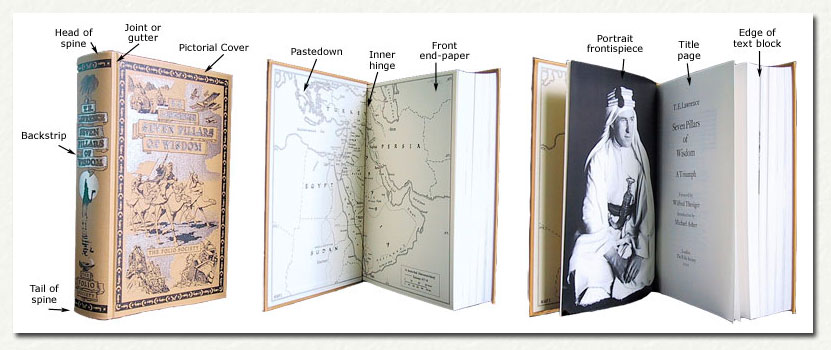
Book dimensions are given in
inches, to the nearest quarter-inch, in the format width x height.
Please
note that, to differentiate them from soft-covers and paperbacks, modern
hardbacks are still invariably described as being ‘cloth’ when they are, in
fact, predominantly bound in paper-covered boards pressed to resemble cloth. |
|
 |
 |
|

Fine Books for Fine Minds |
I value your custom (and my
feedback rating) but I am also a bibliophile : I want books to arrive in the
same condition in which they were dispatched. For this reason, all books are
securely wrapped in tissue and a protective covering and are
then posted in a cardboard container. If any book is
significantly not as
described, I will offer a full refund. Unless the
size of the book precludes this, hardback books with a dust-jacket are
usually provided with a clear film protective cover, while
hardback books without a dust-jacket are usually provided with a rigid clear cover.
The Royal Mail, in my experience, offers an excellent service, but things
can occasionally go wrong.
However, I believe it is my responsibility to guarantee delivery.
If any book is lost or damaged in transit, I will offer a full refund.
Thank you for looking.
|
|
 |
 |
|
Please also
view my other listings for
a range of interesting books
and feel free to contact me if you require any additional information
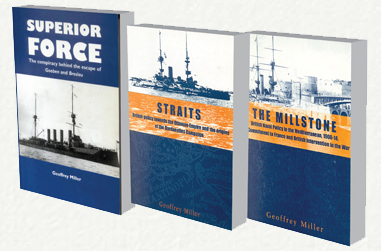

Design and content © Geoffrey Miller |
|
 |
|
|
|